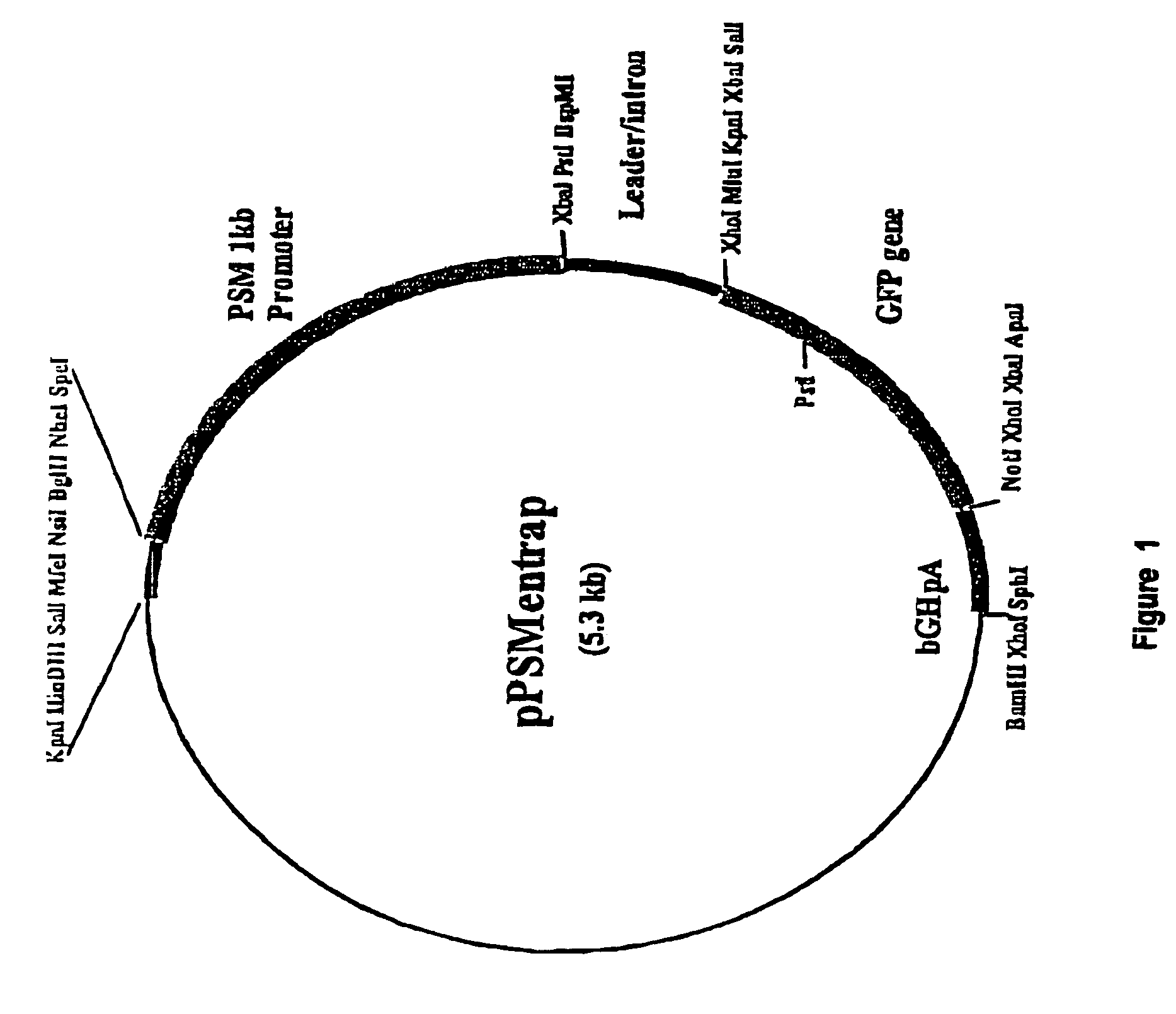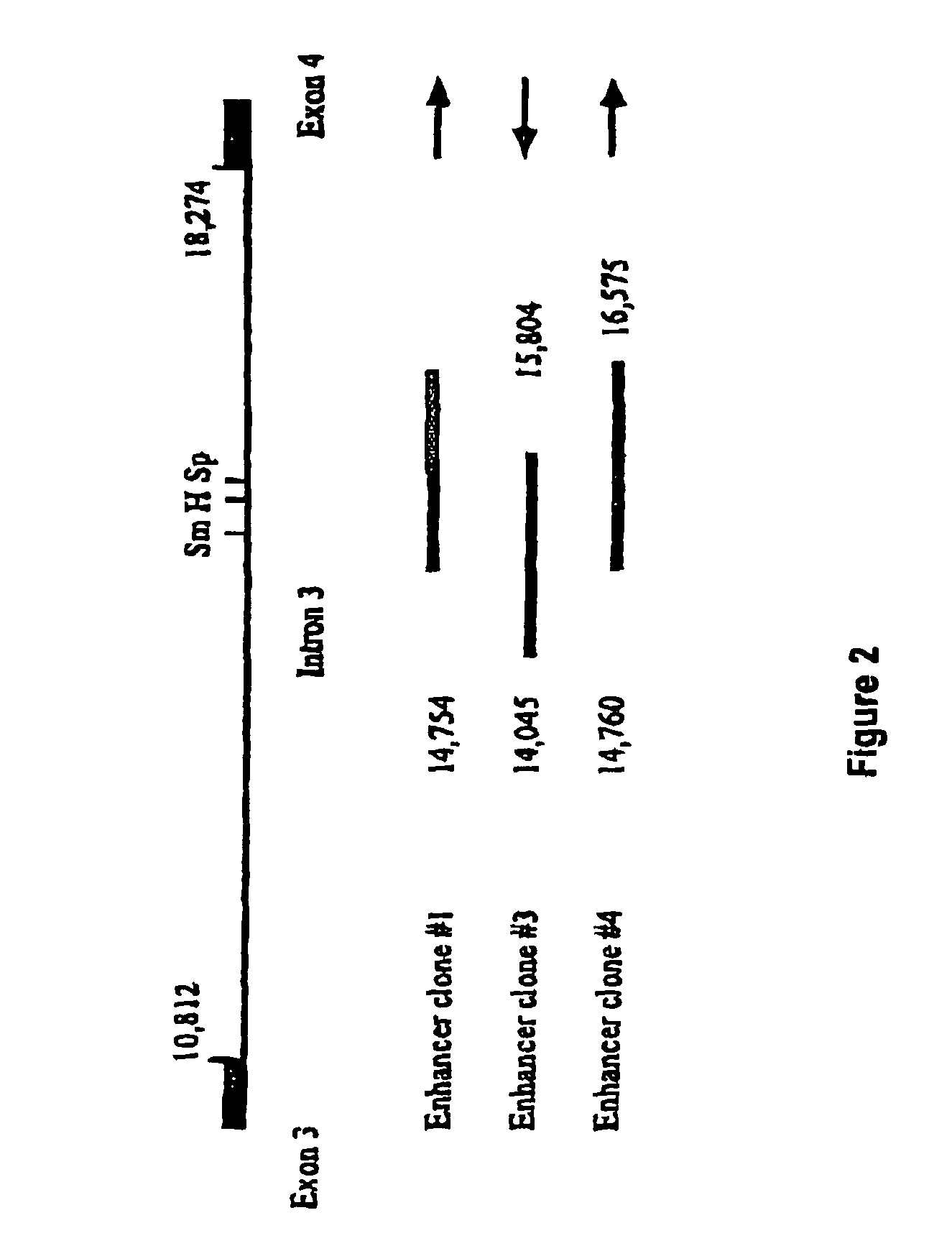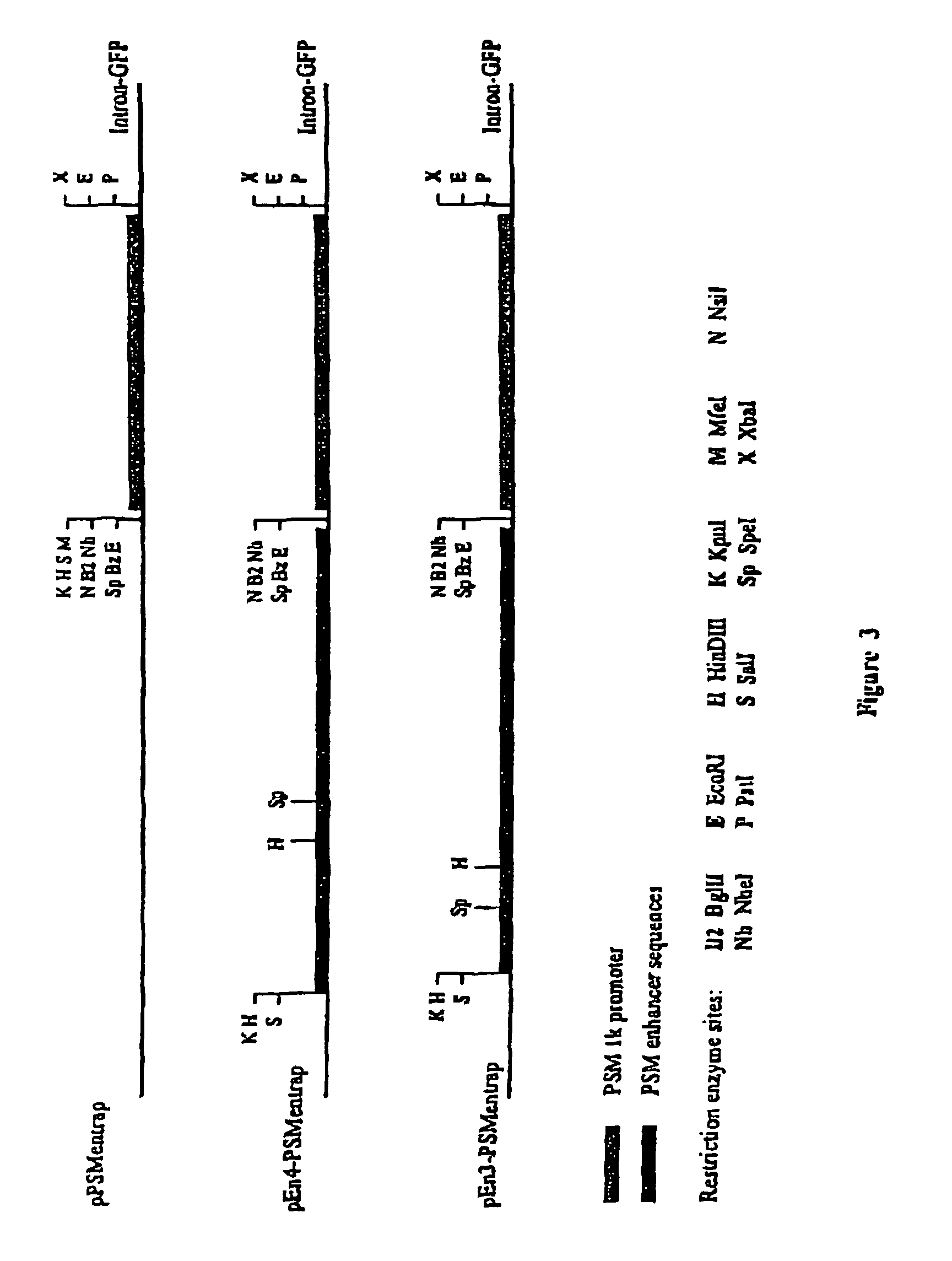Regulatory constructs comprising intron 3 of prostate specific membrane antigen gene
a prostate specific and membrane antigen technology, applied in the field of recombinant vectors, can solve the problems of insufficient region to direct cell type specific expression, immunohistochemical analyses have failed, and the ability to identify antigenically reactive psma in human brain tissu
- Summary
- Abstract
- Description
- Claims
- Application Information
AI Technical Summary
Benefits of technology
Problems solved by technology
Method used
Image
Examples
example 1
Isolation of PSMA Gene Enhancer Sequences
[0092]Analyses of the region upstream and encompassing the transcription start site of the PSMA gene (40) has shown that a 1 KB region directs expression of reporter genes in the prostate cell line LNCaP. This expression shows specificity for prostate cells when compared to that directed by the SV40 enhancer / promoter. Expression in LNCaP cells was about 75% of that directed by the SV40 enhancer / promoter. Comparison with another widely expressed promoter, that of the Rous sarcoma virus (RSV) has indicated that the SV40 enhancer / promoter is only very weakly active, <1% of RSV activity, in LNCaP cells (unpublished data). We have cloned regions encompassing up to 11 kb of sequences 5′ to the PSMA transcription start site and tested their ability to provide increased reporter gene expression; no increased activity was seen relative to the 1 kb promoter region.
[0093]A strategy was developed to allow screening of DNA fragments for their ability to e...
example 2
Location and Sequence Analysis of Enhancing Fragments
[0097]The inserts from the clones were re-cloned into PBLUESCRIPT SK+ (pBKSEn3 and pBKSEn4) cloning vectors and the sequences of their ends determined. All clones were found to originate from the third intron of the PSMA gene as shown in FIG. 2. The positions of both ends of clones #3 and #4 were identified as shown. The inserts in clones #3 and #4 were aligned in opposite orientations relative to the PSM promoter in the pPSMentrap vector as shown in FIG. 3. The clones share a common overlapping sequence of 1044 bp and extend in total over 2,530 bp. The third clone, #1, derived from the same region, one end being 6 bp upstream of the end of clone #4 and it also contained the SpeI and HinDIII sites contained in the region common to clones #3 and #4. It had, however, undergone some rearrangement on cloning and has not been further studied.
example 3
Function of PSMA Enhancer Region
[0098]The activity of the PSMA enhancer region was first identified by visual inspection of fluorescence intensity of cells transfected with clones carrying PSMA gene inserts upstream of the PSM promoter. In these preliminary experiments it was also noted that the enhancer (clone #4) did not appear to function in the bladder cell line BL13 (not shown). In order to provide for quantitative determination of promoter and enhancer function, enhancers #3 and #4 (hereafter designated En3 and En4) in combination with the PSM 1 kb promoter were re-cloned into two different gene expression reporter systems.
PUM
 Login to View More
Login to View More Abstract
Description
Claims
Application Information
 Login to View More
Login to View More - R&D
- Intellectual Property
- Life Sciences
- Materials
- Tech Scout
- Unparalleled Data Quality
- Higher Quality Content
- 60% Fewer Hallucinations
Browse by: Latest US Patents, China's latest patents, Technical Efficacy Thesaurus, Application Domain, Technology Topic, Popular Technical Reports.
© 2025 PatSnap. All rights reserved.Legal|Privacy policy|Modern Slavery Act Transparency Statement|Sitemap|About US| Contact US: help@patsnap.com



